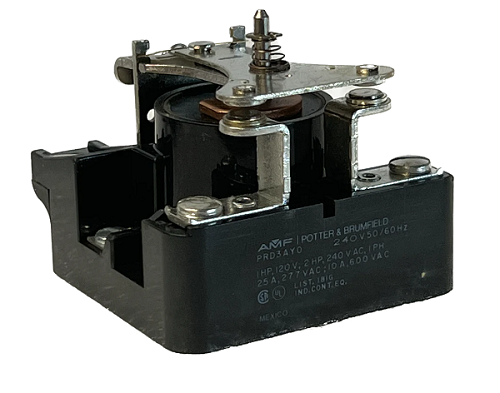Understanding the Working and Applications of General Purpose Relays

Relays are important for controlling general-purpose electrical systems and regulating other circuits. There are many different types, but general purpose relays are highly flexible and can be used in almost any application. These switches have been designed to control multiple tasks, from turning on home appliances to complex industrial applications.
This guide outlines details on how general purpose relays work, their advantages, and the applications they are used in.
How Do General Purpose Relays Work?
To understand how general-purpose relays work on electrical points, imagine they are more like on-off switches but are activated electrically. When a small current is passed through the coil, a magnetic field builds around the coil, which attracts the current passing near the armature. This movement shuts the contacts and completes the circuit.
When the current is shut off, the magnetic field around the coil reduces, and the spring moves the armature to its initial state, simultaneously holding the circuit contacts off. Through this process, they can control larger currents without any direct physical connection with the controlled circuit. For example, a relay can turn on or off a high-voltage circuit without directly contacting it, which is an important characteristic of automation and safety circuits.
Advantages of Using General Purpose Relays
- Isolation: Since the control circuit and the controlled one are separate, these switches provide electrical isolation. This helps prevent electrical hazards and protects delicate control components from high-power currents.
- Versatility: They can regulate various kinds of loads, such as resistive, inductive, or capacitive loads, and can be used with either AC or DC circuits.
- Compact and Cost-effective: These are usually small and can be easily incorporated into circuits, thus making them cheaper than many other electrical control solutions.
- Long Life Span: General-purpose relays are quite stable, and their construction is simple with minimal components. If used within the rated specifications, they can last for thousands of cycles.
Common Applications of General Purpose Relays
Now, let us take a look at the most common applications that are associated with these switches.
- Home Appliances: They are applied to common home appliances, including washing machines, dishwashers, and microwave ovens, to distribute power to heating elements and motors.
- HVAC Systems: In heating, ventilation, and air conditioning applications, they operate fans, compressors, and other devices that manage temperature.
- Automotive Applications: In cars, they control different operations such as headlights, wipers, and horn circuits. These circuits enable them to be switched with minimum electricity from switches installed within the car.
- Industrial Machinery: These switches, alarms, and complicated sequences that need to be automated control large and powerful loads in industrial machines.
- Lighting Systems: In both residential and commercial facilities, lighting systems are utilized for lighting control or to trigger the lighting system to turn on or off under various conditions.
- Security Systems: They are mostly used in security systems and are triggered by certain conditions to sound alarms, turn one camera, or activate other security systems
Types of General Purpose Relays
- Electromechanical Relays: These are the most common type, using a physical coil and armature. They are reliable and inexpensive, ideal for general switching tasks.
- Solid State Relays (SSRs): This type does not include mechanical parts, but they utilize semiconductor devices. SSRs are quickly responding, long-lasting, and suitable for applications where vibrations or frequent switching wear the mechanical parts.
- Time Delay Relays: They are general purpose relays specially designed to delay the making or breaking of a circuit. They are commonly used where timing is critical, for example, in the automation of plants and machinery.
- Reed Relays: They consist of a pair of contacts sealed in a glass bulb under an inert gas. They are used in low-power circuits where size and accurate switching are required.
Things to Consider When Selecting a General Purpose Relay
Selecting the right relay is not just about selecting one that functions properly. Some factors must be kept in mind while selecting.
- Voltage and Current Ratings: Check the relay’s voltage and current compatibility according to the needed expectations to prevent overheating or early failure.
- Switching Speed: In some cases, there may be a need to switch between different applications at a faster or slower rate. Solid-state relays are faster in switching action than electromechanical ones, but electromechanical switches are affordable.
- Environment: The relay should be appropriate for the place where it is to be used. For example, if you are going to use it in an environment susceptible to dust, moisture, or high temperature, you should purchase a sealed or rugged control switch.
- Size and Mounting: These switches can be classified by size and mounting method. Ensure the one you choose will fit well within the bracketing type or the area where you want to install it.
Conclusion
General purpose relays are control devices vital for safe and effective electrical control. They provide a combination of features like isolation, flexibility, and reliability, which is why they are helpful for everything from small household appliances to industrial machines. As many brands are on the market, specific considerations, including power, environment, and function, define the relay necessary for a given application.
Although they may not appear to be complex components, they are used more frequently in our daily lives than we expect. From simple control of an electric light bulb to complex control of a heavy machine, general-purpose switches enable safe and easy control of electrical functions.






